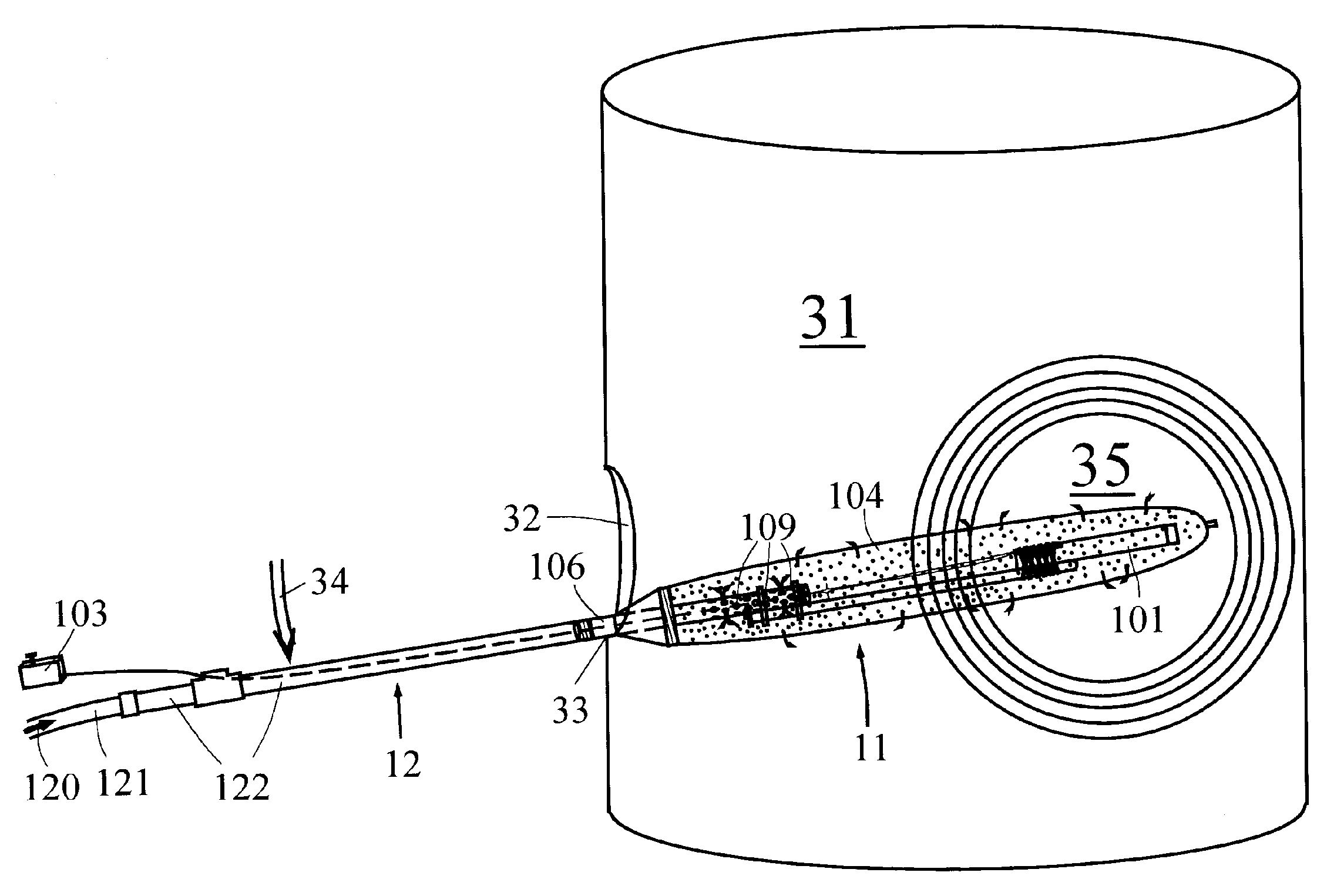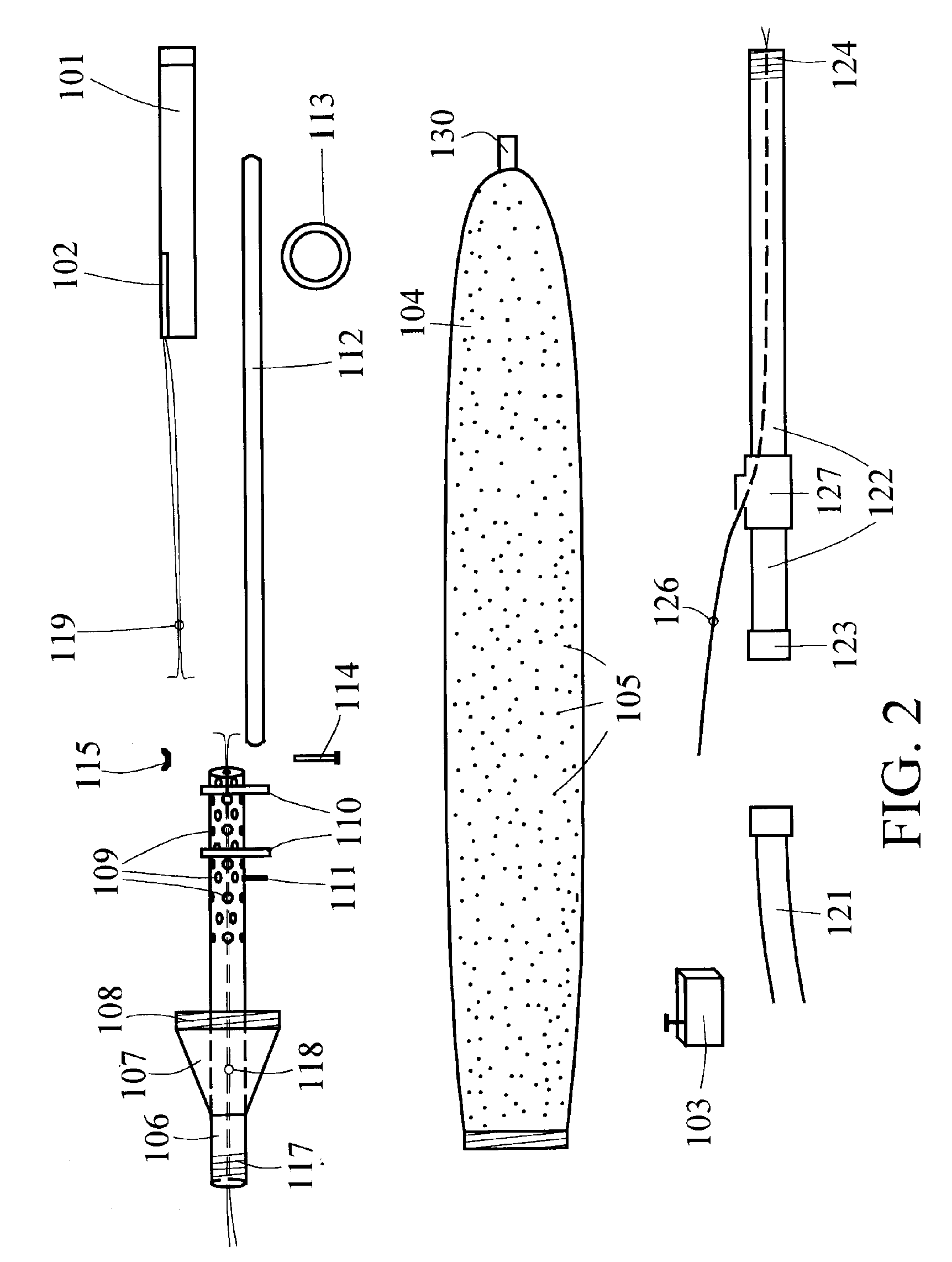Device, system and method for on-line explosive deslagging
a technology of explosive deslagging and devices, applied in the field of devices, systems and methods for online explosive deslagging, can solve the problems of wasting production time, wasting time, and expensive process, and achieve the effects of safe and controllable use, valuable operation time to be recovered, and valuable operation time for fuel-burning facilities
- Summary
- Abstract
- Description
- Claims
- Application Information
AI Technical Summary
Benefits of technology
Problems solved by technology
Method used
Image
Examples
Embodiment Construction
[0032]FIG. 1 depicts the basic tool used for on-line cleaning of a fuel-burning facility such as a boiler, furnace, or similar heat exchange device, or an incineration device, and the discussion following outlines the associated method for such on-line cleaning.
[0033]The cleaning of the fuel burning and / or incineration facility is carried out in the usual manner by means of an explosive device 101, such as but not limited to an explosive stick or other explosive device or configuration, placed appropriately inside the facility, and then detonated such that the shock waves from the explosion will cause slag and similar deposits to dislodge from the walls, tubing, etc. of the facility. This explosive device 101 is detonated by a standard explosive cap 102 or similar detonating device, which causes controlled detonation at the desired instant, based on a signal sent from a standard initiator 103, by a qualified operator.
[0034]However, to enable explosives-based cleaning to be performed...
PUM
 Login to View More
Login to View More Abstract
Description
Claims
Application Information
 Login to View More
Login to View More - R&D
- Intellectual Property
- Life Sciences
- Materials
- Tech Scout
- Unparalleled Data Quality
- Higher Quality Content
- 60% Fewer Hallucinations
Browse by: Latest US Patents, China's latest patents, Technical Efficacy Thesaurus, Application Domain, Technology Topic, Popular Technical Reports.
© 2025 PatSnap. All rights reserved.Legal|Privacy policy|Modern Slavery Act Transparency Statement|Sitemap|About US| Contact US: help@patsnap.com



